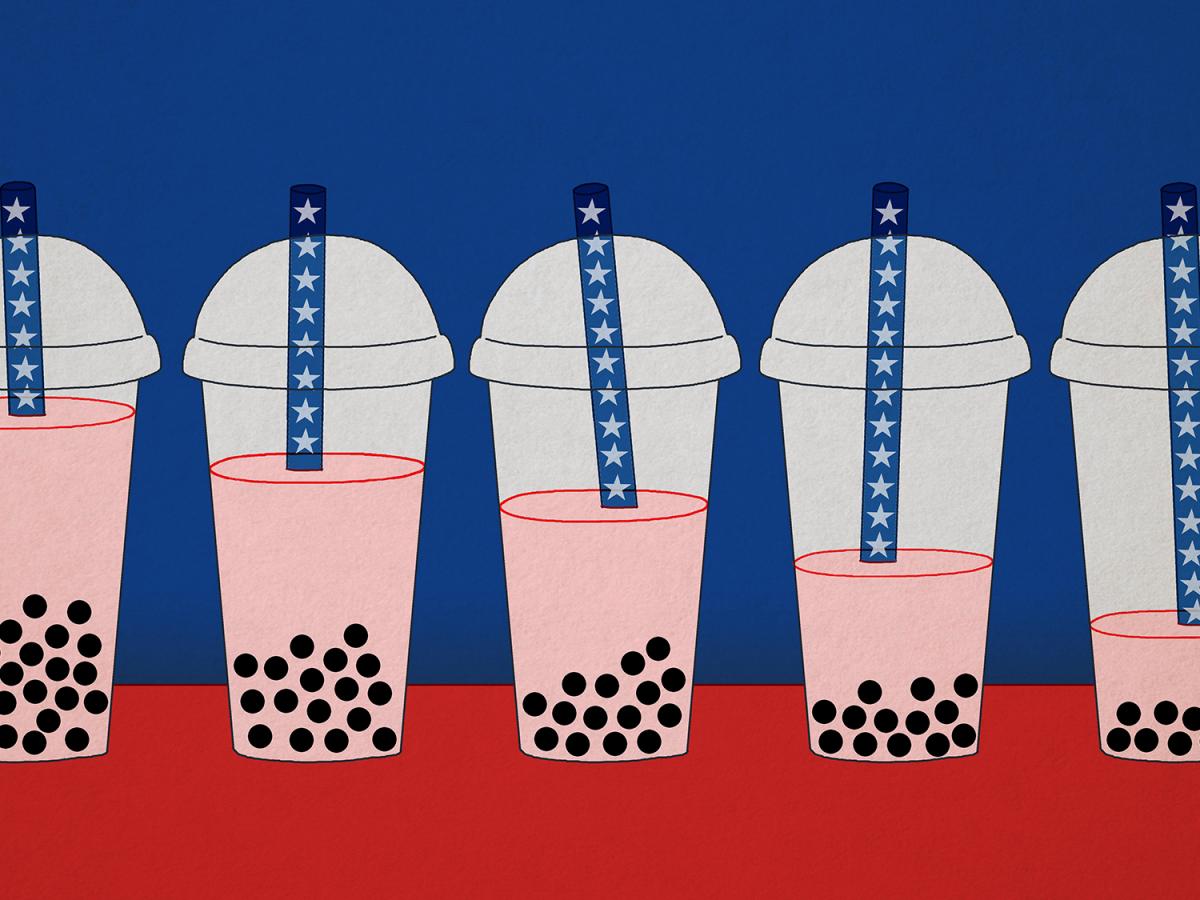GABY RUSLI WRITES — The sweet, milky, smooth, light brown tea. The dark brown, chewy, little bubble-like goodness at the bottom of the plastic cup. The excitement you feel when you’ve stuck your straw into the cup, ready to enjoy this drink that will satisfy your thirst and craving for something sweet and that you know will somehow brighten up your day. This is bubble tea. The “bubble,” also known as “boba,” refers to the round tapioca balls at the bottom of a cup of milk tea.
American youths of all colors and backgrounds have been drawn to the rising craze of bubble tea, especially in Southern California. More tea shops are opening up to meet this demand. Due to intense competition, each tea shop attempts to innovate with flavors like one I tried last week: Mango and coconut, which was definitely different!
Bubble tea originated with Taiwanese culture in the 1980’s. It was then introduced in Southern California in the early 90’s, quickly gaining popularity due to the rise of Taiwanese immigrants coming to the United States. According to history, during one hot summer a savvy food stall owner [in Taiwan] thought to combine three popular elements into one beverage—tapioca balls on the bottom, followed by a layer of shaved ice, and milk tea to fill out the rest of the drink.
This might seem like just another simple new trend, but I see it as Asian culture more steadily and consistently being embraced in today’s Southern California melting pot of fast-growing American cities. It signifies the cross-cultural comfort that persons of Asian descent, living in America, can now feel with friends while laughing and playing board games and getting much-needed relief from homesickness or feelings of cultural alienation. Jenny Zhang, a writer for the food and dining website Eater, wrote, “It felt like a kind of secret language for which only my Asian-American friends and I held the Rosetta Stone, a currency of exchange in a foreign landscape in which I otherwise felt lost and alone.” While this may still be the case for many Taiwanese youths, bubble tea has now helped the cultural melting pot to become even more fluid.
This is certainly the reality for me. I may not be Taiwanese, but as an international student from Indonesia struggling to find permanent roots in the United States, I would be lying if I said I don’t miss my family, friends, and home country foods; and truth is, as some of my closest friends in their home countries hunker down due to the pandemic, my boba gives me a sense of normalcy, love and warmth-a much-needed connection to them.
Despite all this, with the recent announcement of several promising vaccines to combat the Coronavirus, I wait patiently in the hope that someday soon I will be fortunate enough to enjoy bubble tea with my loved ones again safely, at home.

